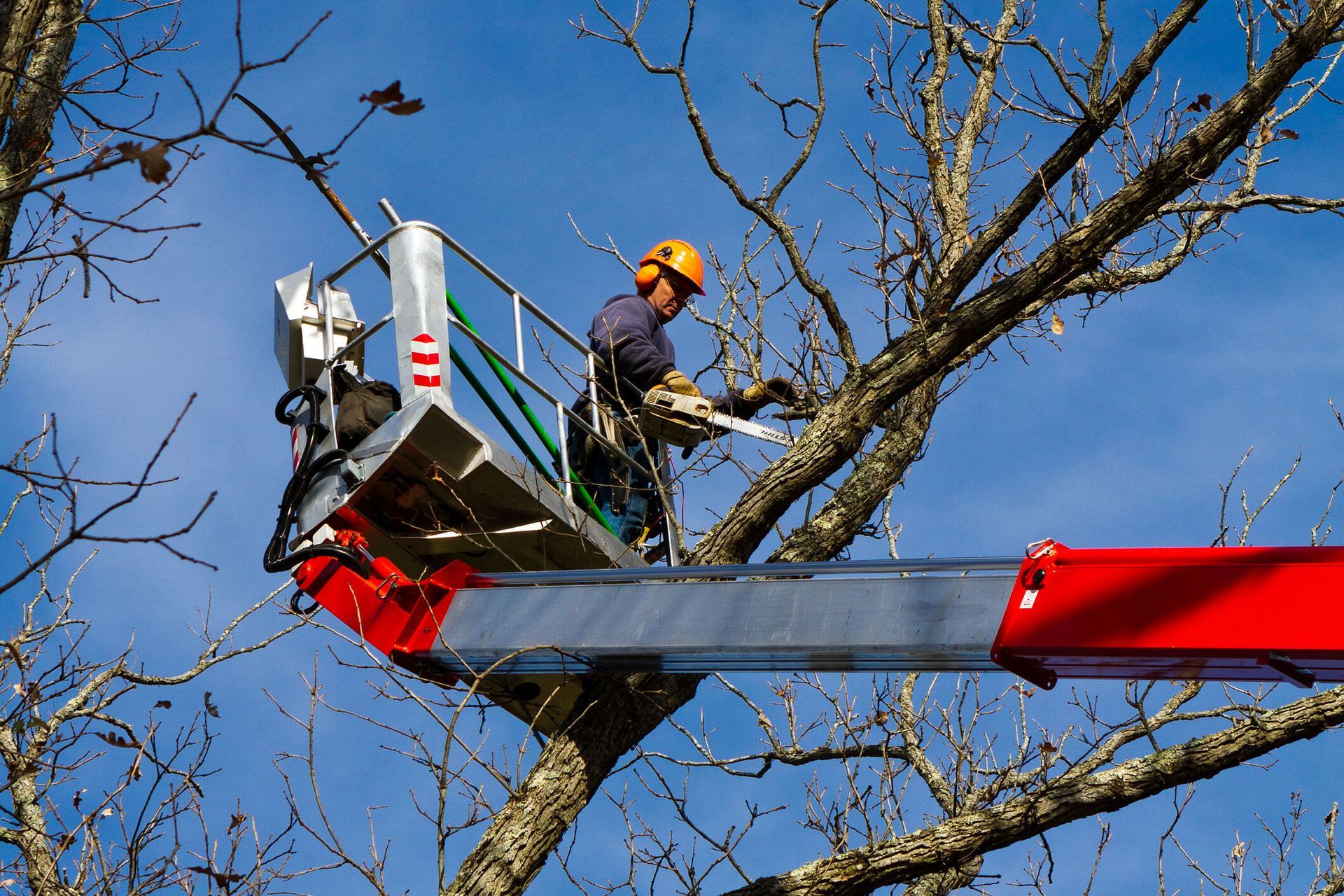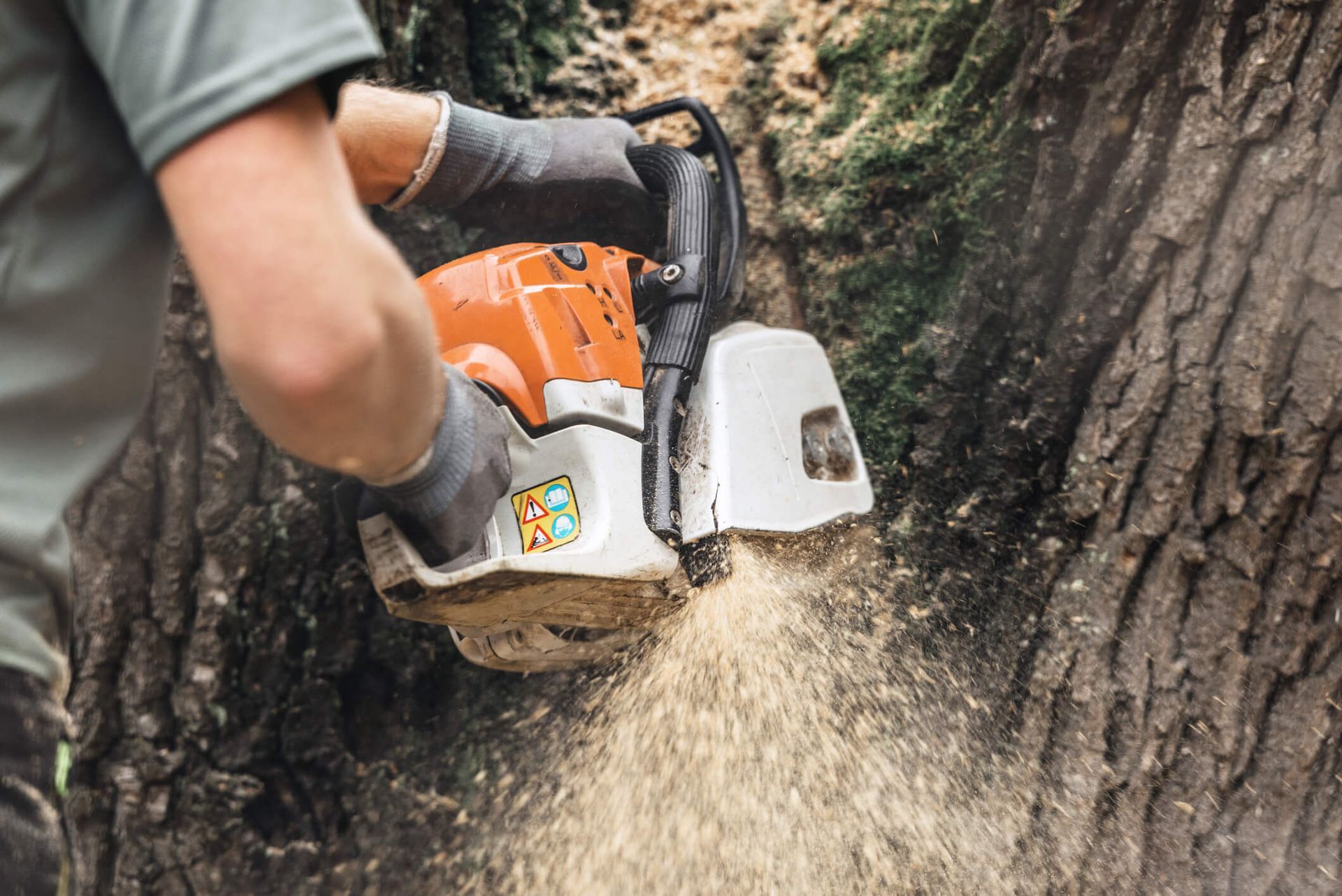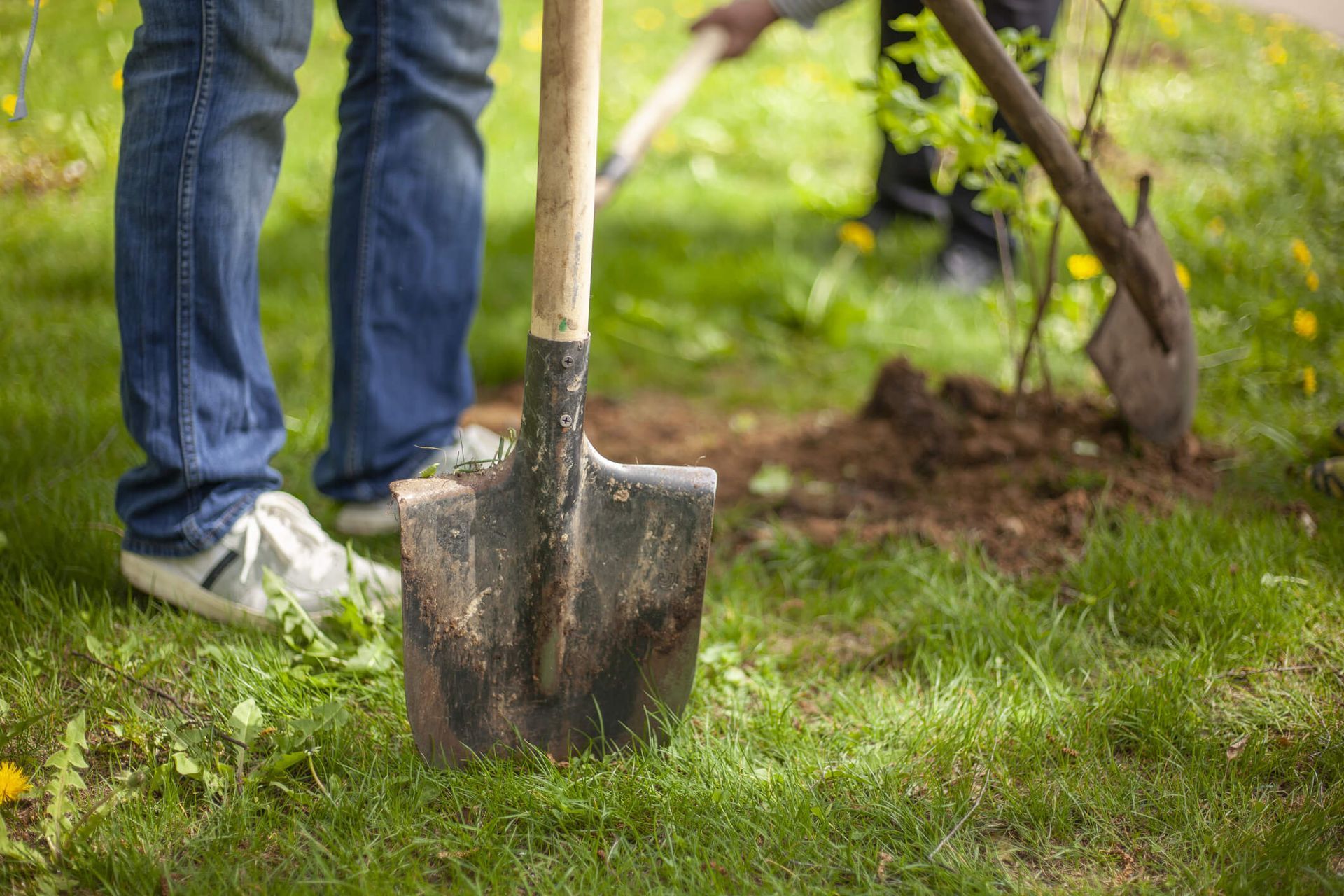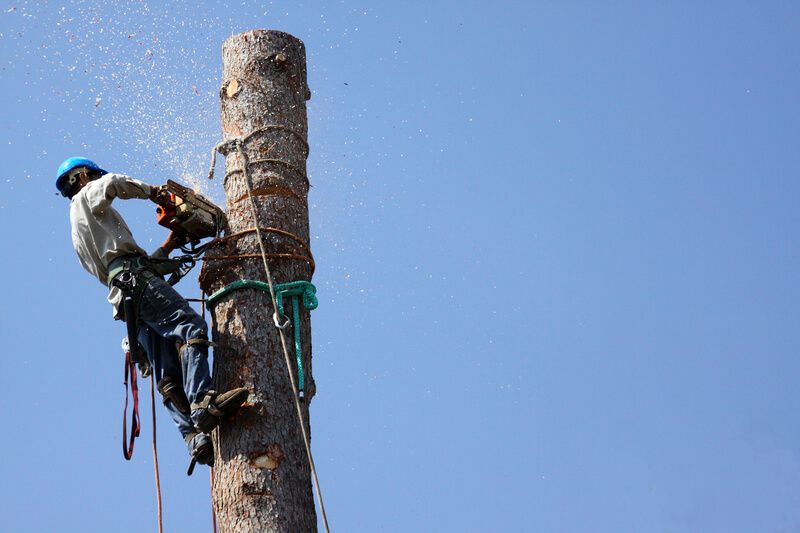What Are the Signs That Indicate It May Be Time for Tree Removal
What are the signs that indicate it may be time for tree removal? You're concerned about the sick tree in your backyard, and for good reason—it needs quick attention because of its unusually hollow, lean trunk or fungus growth. A terrible storm or a breezy afternoon might bring this deteriorating tree down. Here are 12 signs that indicate it may be time for tree removal, even though a professional can handle some conditions.
Occasionally, these signs may not be obvious at first, necessitating the expertise of a licensed arborist to identify your tree. Most of the time, you'll need to engage a professional if the tree needs removal. DIY tree removal may be achievable with healthy trees. However, removing dying or unhealthy trees poses a substantially larger safety risk.
What are the Signs that Indicate It May Be Time for Tree Removal?
Several signs indicate it may be time for tree removal. Recognizing these signs is crucial for your property's safety and your landscape's well-being.
The tree showing signs of decay or damage
A tree's structural integrity can be compromised when damaged or experiences decay. Keeping the tree any longer might be unsafe, particularly if it is close to your home, sidewalk, or driveway.
It may be time to say goodbye to your tree if it exhibits any of these warning signs of decay or damage:
- Vertical trunk cracks
- Abnormally peeling bark
- Dead branch stubs
- Open cavities or visible tree wounds
- Severe damage to the trunk
- Broken wood following a lightning strike
Getting your tree examined is a smart idea if it sustains damage during a storm. A qualified arborist or a tree service company can assess the damage done and whether the tree must be removed.
The tree appears to be about to fall
There is always a chance that overgrown branches and leaning trees can fall and injure someone or cause property damage. See a tree removal professional if pruning the tree doesn't help to remove the risk of falling limbs completely.
Hollow tree
Although the hollow hole within the tree's trunk may look good in a family photo, it indicates internal decay or weakening in your tree.
Falling tree branches may also reveal hollow cavities that serve as squirrel and owl havens. Therefore, it might be hollow if you notice fluffy heads sticking out from the tree.
Now, you don't have to destroy a squirrel or owl family's house without getting a second opinion to avoid disturbing them needlessly. Call your local arborist to ascertain whether the tree is good enough to stay in.
Tip: Hollow trees don't usually have obvious signs. Sounding a tree is the process of pounding different parts of the tree using a rubber mallet to check for hollowness. It's a simple way to inspect the tree yourself, but it's a good idea to let a tree care professional do the testing as well, as they are skilled at picking up every tiny difference in sound.
Dead branches from the tree
Dead branches could indicate a disease, pest problem, or other stressor affecting your tree. The odd dread branches aren't a reason for concern (tree pruning is for that), but a tree with multiple dead branches may indicate an underlying problem.
A branch is most likely dead if it exhibits no signs of life. Here's how to determine whether a branch is alive:
- The branch's bark is firmly attached.
- The branch is flexible—dead branches shatter easily.
- During the growing season, the branches have buds and foliage.
- The layer underlying the branch is green when you gently scratch it.
- Large, dead branches in the landscape are hazardous because strong winds might quickly bring them crashing down. Also, dead branches might break off like a toothpick under a thick snow covering.
Tip: Look out for branches that rub against one another. They could cause open wounds, which expose the tree to illness if they rub against one another or entwine.
There is a fungus damaging the tree
It appears strange that those mushrooms are growing at the base of a tree. A common warning sign of disease is the growth of fungi on your tree. Certain diseases can be fatal to the diseased and nearby healthy trees, even if they can sometimes be treated.
What additional signs of tree illness are there besides fungus that are visible? Let's examine this:
- Falling, wilting, or discolored needles or leaves
- Wood depressions
- Fruit scabs
- Bleeding cankers
- Stunted growth
- Small, pimple-like structures that produce spores

The tree is dying or dead
Your only option is to remove your tree if an arborist verifies it is dead. It may be possible for a tree care professional to save a diseased tree, but it is impossible to revive a dead tree.
Among the telltale signs of a dying or dead tree are:
- Not growing any buds or leaves during its growing season
- The trunk leans significantly.
- Dead branches
- When the tree appears evergreen, it can show browning at the tips of the needles, a thinning canopy, or both.
- The tree displays signs of disease or insects.
The tree exhibits a notable or new lean
Your tree will naturally lean somewhat since one side will always weigh more than the other. Nevertheless, you may begin to worry about your tree's health if the lean is so severe that it affects the architecture of the tree or if the tree suddenly develops a lean that it has never had before.
If your tree looks to be uprooting itself or has developed a new lean, have an arborist evaluate it. There could be storm damage or deterioration, causing the tree to lean.
The tree is situated in a dangerous location
Even when a tree appears in excellent health, its location in the landscape could sometimes be dangerous. A tree expert might advise removing a tree near power lines, your home, or other structures. A potentially dangerous tree breaking or cracked into the roof or cutting off the power is the very last thing a person wants to happen.
The tree suffers insect damage
Who knew that a tiny bug could cause such damage to a massive tree? While infestations of certain insects may not always result in the death of your tree, others, such as the emerald ash borer, will.
Certain insects, such as the banded ash borer, exclusively harm dead or dying trees. Therefore, if your tree exhibits insect damage, it can indicate a prior problem that needs to be addressed.
If any of the following symptoms apply to your tree, an insect may be the cause:
- Large silken branches on tents
- D-shaped or round exit holes
- Zigzagged or S-shaped tunnels inside the wood
- Visible tree larva
- Stunted tree growth
- Defoliation or leaf damage
- Egg masses
Invasive Trees
Although invasive trees may have a lovely appearance, they can negatively impact the health of your environment by crowding out native trees, reducing biodiversity, and upsetting the ecosystem.
Names of invasive trees are:
- Bradford pear trees
- Chinese tallow
- Chinaberry trees
- White poplar
- Mimosa (or silk) tree
- Black locust
- Tree of heaven
The tree has root rot
Even with rotting roots, a tree can still be saved. Even though aggressive treatment might be able to address the condition, if the tree is dangerous, an arborist may nevertheless advise removal.
Recognizing the symptoms of root rot can be challenging. For what reason? Because root rot symptoms can be mistaken for other problems, and you cannot see the tree roots below ground unless you've got x-ray vision.
Root rot symptoms include:
- Poor growth
- Decaying and weak branches
- Discolored and wilted leaves
- Canopy thinning
- Fungus growing from its roots
- Sunken or canker wood
The tree is preventing the growth of your lawn
Sometimes, the only way to have dense, green grass within the shade, even with your best efforts to grow grass in the shade, is to remove the shade tree. Although there are forms of grass that can withstand the shade, grass that grows in the shade will develop less well than grass that receives direct sunlight.
You don't have to remove a shade tree if you're happy with how your grass grows. The best outcome, nevertheless, will come from taking down a shade tree if your goal is to have consistent, carpeted grass.
The tree crotch has a "Y" or "V"
Trees having more than one trunk may pose a risk to public safety based on how the trunks meet at an angle called the crotch. Trunks with a tight "Y" or "V" crotch tend to be less connected than those with a U-shaped crotch. These sharply slanted connections make trees brittle and may need tree removal services.
Should you do DIY or hire tree service professionals?
Generally speaking, it's best to let professionals handle tree removal. It can be fatal to try to remove a tree that is weak, dead, dying, or that has structural issues. It's advisable to contact a professional if a tree is growing close to power lines, your home, or any other trees.
Removing a tree on your own is only feasible provided the tree is sound, of a reasonable size, and there are no adjacent obstructions. Along with having the necessary licenses and tools, you also need to be comfortable using a chainsaw. The safest approach to removing a tree is to hire a reputable tree removal company in Southern Indiana, while doing it yourself is a possibility in some cases.
We Provide Fast and Effective Tree Removal Services in Indiana
Offering comprehensive tree removal, trimming, pruning, and other tree services is what we do at SYS Enterprises Tree Services. We offer the knowledge and equipment to keep your garden and yard clean. Our team of professionals will use the best equipment available, provide high-quality services at competitive pricing, and adhere to all mandatory safety procedures.
Call us at (502) 724-6950 for tree removal services around Southern Indiana.
FAQs: What Are the Signs That Indicate It May Be Time for Tree Removal
1. What are the common signs that a tree may need removal?
Common signs include visible decay or damage, leaning trunks, dead branches, and fungi. A professional arborist can assess these signs for potential tree removal.
2. How can I tell if my tree is hollow?
You can hear the tree gently tapping various areas with a rubber mallet. If the sound is dull, it may indicate hollowness. However, it's best to have a professional evaluate it for an accurate diagnosis.
3. Is it safe to remove a tree on my own?
DIY tree removal is only safe for healthy, small trees without nearby obstructions. Due to safety concerns, hiring a professional is recommended for larger or unhealthy trees.
4. What should I do if I notice dead branches on my tree?
Isolated dead branches can often be pruned, but if there are multiple dead branches, it may indicate a more significant issue. Consulting a tree care professional for an assessment is advisable.
5. How can I prevent pests from damaging my trees?
Regular inspections and proper tree care can help prevent infestations. Contact an arborist for treatment options if you notice signs of insect damage, such as exit holes or defoliation.
6. What types of trees are considered invasive, and why should they be removed?
Invasive trees like Bradford pears and Chinese tallows can disrupt local ecosystems by outcompeting native species. Removing them can help restore biodiversity.
7. How do I recognize root rot in my tree?
Root rot symptoms include poor growth, discolored leaves, and fungi at the tree's base. If you suspect root rot, it's essential to consult an arborist for proper diagnosis and potential removal.
8. Can a dying tree be saved?
In some cases, diseased trees can be treated, but if an arborist confirms that a tree is dead, removal is the only option. Prompt evaluation is essential for a chance of recovery.
9. Why should I hire a professional tree service?
Professionals have the training, experience, and equipment necessary to safely remove trees, especially dead ones or trees that pose hazards. This ensures safety for both people and property.
10. How often should I have my trees inspected?
It's advisable to have trees inspected at least once a year or more frequently after severe weather events. Regular assessments help catch potential issues before they escalate into major problems.
You might also like
Book a Service Today
We will get back to you as soon as possible
Please try again later
Get In Touch With Us
Contact us for a quote
Location
Charlestown, IN
yschilt4@gmail.com
Call
502-724-6950
All Rights Reserved | Sys Tree Service


